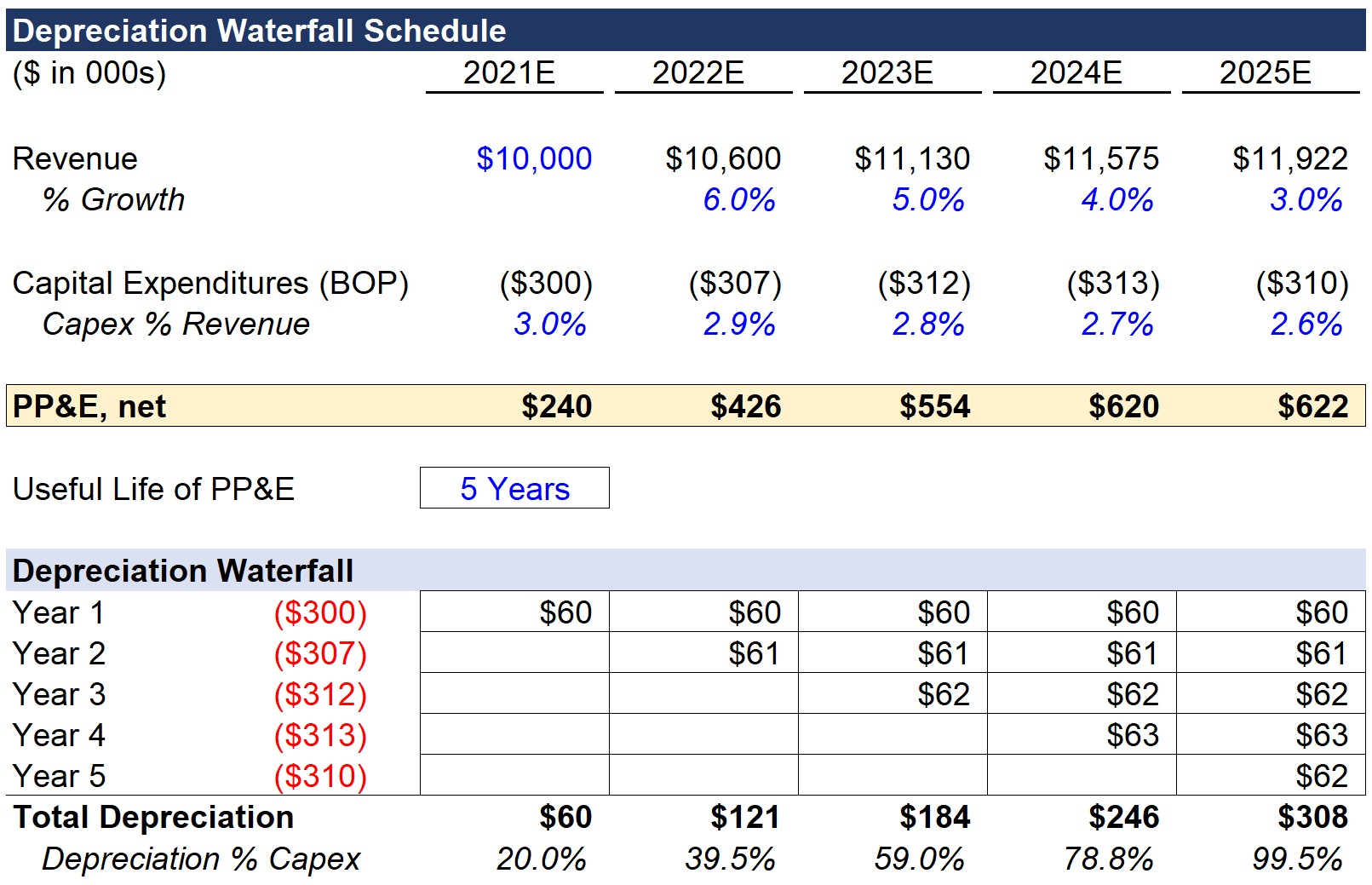

Finance
What Is A Middle Market Investment Bank?
Published: October 18, 2023
Learn about the role and functions of a middle market investment bank in the finance industry. Gain insights into their services and expertise.
(Many of the links in this article redirect to a specific reviewed product. Your purchase of these products through affiliate links helps to generate commission for LiveWell, at no extra cost. Learn more)
Table of Contents
- Introduction
- Definition of a Middle Market Investment Bank
- Services Offered by Middle Market Investment Banks
- Characteristics of Middle Market Investment Banks
- Advantages of Working with a Middle Market Investment Bank
- Differences between Middle Market and Bulge Bracket Investment Banks
- Examples of Middle Market Investment Banks
- Conclusion
Introduction
Welcome to the world of middle market investment banking, where financial expertise meets the needs of small and medium-sized businesses. In this article, we will explore the ins and outs of middle market investment banks, the services they offer, and the advantages of working with them.
In today’s fast-paced and complex business landscape, companies of all sizes rely on investment banks for financial guidance and support. While large corporations often turn to bulge bracket investment banks, smaller companies often find that middle market investment banks are better suited to meet their unique needs.
What exactly is a middle market investment bank? Essentially, it is a financial institution that specializes in providing advisory services, capital raising, and merger and acquisition (M&A) assistance to companies with annual revenues ranging from $10 million to $500 million. These banks bridge the gap between small, local banks and the large investment banks that dominate Wall Street.
The distinction lies in the focus. Middle market investment banks concentrate on the specific needs of middle market companies, offering tailored solutions that address their size, industry, and growth aspirations. These banks understand the nuances of operating in the middle market space, where companies often face unique challenges and opportunities.
With their deep understanding of the middle market landscape, these banks can provide a wide range of services to help companies navigate strategic transactions, secure financing, and maximize growth potential. From advising on mergers and acquisitions, facilitating private placements, to conducting due diligence and providing valuation assessments, middle market investment banks offer comprehensive financial services tailored to the specific needs of their clients.
Why do companies choose to work with middle market investment banks? The answer lies in the personalized attention and expertise that these banks bring to the table. Middle market investment banks typically have a smaller client base compared to bulge bracket firms, allowing them to establish closer relationships and provide more hands-on support. This intimate approach means clients can expect dedicated attention from experienced professionals throughout the entire deal process. Middle market investment banks are often praised for their personalized service and deep industry knowledge, making them an excellent choice for companies looking for specialized support.
In the next sections, we will delve deeper into the specific services offered by middle market investment banks, explore their unique characteristics, highlight the advantages of working with them, discuss the differences between middle market and bulge bracket banks, and provide examples of prominent middle market investment banks in the industry.
Definition of a Middle Market Investment Bank
A middle market investment bank is a financial institution that specializes in providing financial advisory services, capital raising, and M&A assistance to companies with annual revenues ranging from $10 million to $500 million. Unlike bulge bracket investment banks that cater to large corporations, middle market investment banks focus on the needs of small and medium-sized businesses.
The middle market, also known as the “sweetspot” of the economy, consists of companies that are too large to be considered small businesses, yet not big enough to be part of the Fortune 500. These companies often face unique challenges and opportunities, requiring specialized financial expertise to unlock their growth potential.
What sets middle market investment banks apart is their deep understanding of this specific market segment. They possess extensive industry knowledge and a keen awareness of the dynamics that drive middle market businesses. This expertise allows them to provide tailored financial solutions that cater to the unique needs and goals of their clients.
In addition to their advisory services, middle market investment banks play a crucial role in capital raising. They assist companies in raising both debt and equity capital to support various initiatives such as expansion, acquisitions, and refinancing. With their network of investors and access to capital markets, these banks help middle market companies attract the necessary funding to fuel their growth strategies.
Furthermore, middle market investment banks specialize in facilitating merger and acquisition transactions. They provide invaluable guidance and support throughout the entire process, from identifying potential target companies or buyers, to conducting due diligence, negotiating deal terms, and facilitating the closing of the transaction. These banks understand the complex nature of M&A transactions in the middle market and have the expertise to ensure successful outcomes.
Given their focus on the middle market, these banks have a reputation for building strong relationships with clients. They prioritize personalized attention and strive to understand the unique aspects of each company they work with. Compared to larger investment banks, middle market banks typically have smaller client bases, allowing them to provide more dedicated support and foster closer relationships.
In summary, a middle market investment bank specializes in providing financial advisory services, capital raising, and M&A support to small and medium-sized businesses. With their industry expertise, personalized approach, and comprehensive range of services, middle market investment banks are essential partners for companies seeking to navigate the complexities of the middle market and achieve their strategic goals.
Services Offered by Middle Market Investment Banks
Middle market investment banks offer a comprehensive range of services tailored to the specific needs of their clients. These services include financial advisory, capital raising, and merger and acquisition assistance. Let’s explore each of these services in more detail:
- Financial Advisory: One of the primary services offered by middle market investment banks is financial advisory. They provide strategic guidance and expertise to help companies make informed decisions regarding their financial goals and objectives. This may include advice on corporate finance, capital structure optimization, business valuation, and strategic planning. By leveraging their industry knowledge and market insights, these banks assist clients in developing effective financial strategies to drive growth and maximize shareholder value.
- Capital Raising: Middle market investment banks play a vital role in helping companies raise capital to support their growth initiatives. They assist in accessing both debt and equity capital markets, identifying suitable financing options, and structuring transactions to optimize terms and conditions. Whether it’s securing funding for expansion projects, refinancing existing debt, or funding acquisitions, these banks have the expertise and network to connect companies with the right investors and lenders.
- Merger and Acquisition (M&A) Assistance: Mergers and acquisitions are common strategic moves for middle market companies. Middle market investment banks offer valuable expertise and support throughout the entire M&A process. This includes conducting market research and due diligence, identifying potential target companies or buyers, preparing financial models and valuation analysis, negotiating deal terms, and facilitating the closing of the transaction. Their industry knowledge and transactional experience allow them to navigate the complexities of M&A transactions effectively and maximize the value for their clients.
- Private Placements: Another service provided by middle market investment banks is facilitating private placements. They assist companies in raising capital through private offerings, connecting them with institutional investors, private equity firms, family offices, and high net worth individuals. These banks help structure the private placement, prepare offering materials, conduct investor outreach, and negotiate favorable terms. Private placements offer an alternative source of capital for companies looking to fuel their growth without going through the public markets.
- Restructuring and Turnaround Advisory: In challenging times, companies may require assistance in restructuring their operations or navigating financial distress. Middle market investment banks offer restructuring and turnaround advisory services to help companies stabilize their financial situation and regain profitability. They provide guidance on debt restructuring, operational efficiencies, cost reduction strategies, and liquidity management. These banks work closely with companies to develop customized plans that address their specific challenges and position them for long-term success.
These are just a few examples of the services offered by middle market investment banks. Each engagement is unique, and the banks tailor their services to meet the specific needs and goals of their clients. With their specialized expertise, comprehensive service offerings, and personalized attention, middle market investment banks are invaluable partners for companies seeking financial guidance and support.
Characteristics of Middle Market Investment Banks
Middle market investment banks have distinct characteristics that set them apart from larger bulge bracket banks. These characteristics enable them to cater to the unique needs of middle market companies. Let’s explore some of the key characteristics of middle market investment banks:
- Deep Industry Knowledge: Middle market investment banks specialize in specific industries and develop deep expertise in their respective sectors. They understand the nuances, challenges, and opportunities that middle market companies face within their industries. This industry knowledge allows them to provide tailored advice and guidance to clients, ensuring that their strategies align with the dynamics of their specific markets.
- Personalized Approach: Middle market investment banks typically have smaller client bases compared to bulge bracket banks. This allows them to provide more personalized attention and build closer relationships with their clients. They take the time to understand the unique needs, goals, and aspirations of each company they work with, providing customized solutions that address their specific circumstances.
- Hands-On Support: Middle market investment banks pride themselves on being actively involved throughout the entire deal process. They offer hands-on support and work closely with their clients to ensure successful outcomes. Unlike larger banks, middle market investment banks have teams that are accessible and responsive, providing dedicated attention to each client’s needs.
- Strong Network: Middle market investment banks have extensive networks of industry contacts, including investors, lenders, and potential buyers or sellers. This network allows them to connect their clients with the right partners and opportunities. Leveraging their relationships, middle market banks can help companies secure financing, identify potential acquisition targets, or explore strategic partnerships.
- Transaction Expertise: Middle market investment banks have deep experience in executing transactions within the middle market space. They understand the unique complexities involved in middle market deals, including valuation considerations, capital structure optimization, and deal structuring. This transactional expertise enables them to guide their clients through the entire process, from initial planning to successful completion.
- Long-Term Relationships: Middle market investment banks prioritize building long-term relationships with their clients. They aim to be trusted advisors, providing ongoing support beyond individual transactions. By fostering lasting relationships, these banks can better understand their clients’ evolving needs and provide continuous support throughout their growth journeys.
These characteristics combine to make middle market investment banks essential partners for middle market companies. Their industry knowledge, personalized approach, hands-on support, strong network, transaction expertise, and focus on building long-term relationships demonstrate their commitment to understanding and addressing the unique needs of middle market businesses.
By leveraging these attributes, middle market investment banks provide valuable financial guidance and support, helping their clients navigate strategic transactions, raise capital, and achieve their growth objectives in the dynamic middle market landscape.
Advantages of Working with a Middle Market Investment Bank
Working with a middle market investment bank offers several advantages for companies operating in the middle market space. These banks possess unique expertise and capabilities that cater specifically to the needs of smaller and medium-sized businesses. Let’s explore some of the key advantages of working with a middle market investment bank:
- Specialized Knowledge: Middle market investment banks focus on specific industries and have deep knowledge of the dynamics and challenges within those sectors. This specialization allows them to provide tailored advice and strategies that align with the unique needs of their clients. Their in-depth understanding of the middle market landscape ensures that companies receive industry-specific guidance to drive their growth and achieve their financial objectives.
- Personalized Attention: Middle market investment banks typically have smaller client bases compared to larger banks, allowing them to provide more personalized attention. They take the time to understand their clients’ specific goals, challenges, and aspirations, crafting strategies and solutions that are custom-fit to their circumstances. This personalized approach ensures that companies receive dedicated support throughout their engagement with the bank.
- Strong Relationships: Middle market investment banks prioritize building long-lasting relationships with their clients. By fostering these relationships, they gain a deep understanding of their clients’ businesses, industries, and growth plans. This close connection enables the banks to provide ongoing support and guidance beyond individual transactions, serving as trusted advisors throughout the clients’ journey.
- Extensive Network: Middle market investment banks have extensive networks of industry contacts, including investors, lenders, potential buyers, and sellers. These networks allow them to connect their clients with the right partners, funding sources, or acquisition opportunities. Leveraging their relationships, middle market banks can help companies access capital, identify potential strategic partnerships, and explore growth opportunities.
- Transaction Expertise: Middle market investment banks specialize in executing transactions within the middle market space. They possess extensive transactional experience, including M&A deals, capital raises, and restructurings. This expertise enables them to guide their clients through complex processes, ensuring smooth and successful outcomes. Their deep understanding of the dynamics and challenges of middle market transactions adds significant value to companies seeking financial advisory and deal execution support.
- Cost-Effective Solutions: Middle market investment banks offer cost-effective solutions compared to larger bulge bracket banks. They understand the budget constraints of middle market companies and provide services tailored to their financial capabilities. Middle market banks offer a balance between expertise and affordability, ensuring that companies receive high-quality financial guidance without the hefty price tag associated with larger banks.
These advantages make middle market investment banks invaluable partners for businesses operating in the middle market space. Their specialized knowledge, personalized attention, strong relationships, extensive network, transaction expertise, and cost-effective solutions enable them to provide tailored financial services that align with the unique needs and goals of their clients.
By leveraging the capabilities of middle market investment banks, companies can gain a competitive edge, access the right opportunities, navigate complex transactions, and achieve their growth objectives in a challenging and dynamic middle market landscape.
Differences between Middle Market and Bulge Bracket Investment Banks
While both middle market and bulge bracket investment banks provide financial services, there are distinct differences between the two that are important for businesses to consider. Understanding these differences can help companies choose the right type of bank based on their specific needs. Let’s explore some of the key differences between middle market and bulge bracket investment banks:
- Client Base: Bulge bracket banks primarily serve large corporations, including multinational companies, governments, and institutional clients. In contrast, middle market banks focus on small and medium-sized businesses that fall within a specific revenue range, typically between $10 million and $500 million. This difference in client base results in a more personalized approach and closer relationships with clients for middle market investment banks.
- Scope of Services: Bulge bracket banks offer a broader range of services and have the capacity to handle complex, high-value transactions, including large-scale mergers and acquisitions, IPOs, and billion-dollar capital raises. Middle market banks, on the other hand, focus on providing specialized services tailored to the needs of middle market companies, such as financial advisory, capital raising, and M&A assistance within a specific revenue range.
- Expertise: Middle market investment banks specialize in specific industries and develop deep expertise within those sectors. They understand the unique challenges and opportunities that middle market companies encounter within their industries. Bulge bracket banks, while often having industry expertise in certain sectors, may not possess the same level of specialization and in-depth knowledge of the middle market landscape.
- Market Access: Bulge bracket banks have greater market access and global reach compared to middle market banks. They have extensive networks and a presence in major financial centers worldwide. This broader market access allows them to tap into a wide range of investors, lenders, and strategic partners. Middle market banks, while having their own networks, typically have a narrower geographic reach and focus on regional or industry-specific markets.
- Cost: Bulge bracket banks often come with higher fees associated with their comprehensive services, extensive resources, and global presence. In contrast, middle market banks offer cost-effective solutions tailored to the specific budgets of middle market companies. These banks provide high-quality financial services at a more affordable price point, making them more accessible for smaller and medium-sized businesses.
- Size and Culture: Bulge bracket banks are large, multinational institutions with a hierarchical structure and a more formal corporate culture. Middle market banks, being smaller in size, have a more intimate and collegial culture. They often have dedicated teams focused on client relationships and are known for providing personalized attention and hands-on support throughout the engagement.
These differences highlight the distinct value propositions of middle market and bulge bracket investment banks. Middle market banks offer specialized expertise, personalized attention, cost-effective solutions, and a tailored approach to meet the specific needs of middle market companies. Bulge bracket banks, on the other hand, provide broader services, extensive market access, and global reach for larger corporations pursuing complex transactions.
When selecting between the two, companies should consider their size, industry, growth objectives, budget, and the level of specialization and personalized support they require. Middle market investment banks excel at understanding the unique challenges and opportunities of middle market companies, which can make them the ideal partner for businesses in this segment of the market.
Examples of Middle Market Investment Banks
There are several prominent middle market investment banks that specialize in providing financial advisory, capital raising, and M&A assistance to middle market companies. These banks have a strong track record of supporting businesses in the middle market segment. Let’s explore a few examples of middle market investment banks:
- Piper Sandler: Piper Sandler is a leading middle market investment bank with a rich history of serving middle market companies. They offer a wide range of services, including equity and debt capital raising, M&A advisory, private placements, and restructuring assistance. With a focus on specialized industry verticals, Piper Sandler provides tailored solutions and deep expertise to help middle market companies achieve their financial objectives.
- William Blair: William Blair is another renowned middle market investment bank that provides comprehensive financial advisory services. They specialize in M&A advisory, capital raising, private equity placements, and strategic consulting. With a global reach and industry expertise, William Blair supports middle market companies across various sectors, helping them navigate complex transactions and achieve their growth goals.
- Houlihan Lokey: Houlihan Lokey is a global investment bank known for its middle market expertise and M&A advisory capabilities. They provide a range of services, including corporate finance, financial restructuring, valuation, and strategic consulting. Houlihan Lokey’s extensive experience in middle market transactions and industry-specific knowledge enables them to deliver tailored solutions to their clients, helping them succeed in the ever-evolving marketplace.
- Raymond James: Raymond James is a middle market investment bank offering a comprehensive suite of financial services. They specialize in equity and debt capital raising, M&A advisory, private placements, and financial restructuring. With a strong emphasis on building long-term client relationships, Raymond James offers personalized attention, deep industry expertise, and extensive market knowledge to middle market companies across various industries.
- Lincoln International: Lincoln International is a leading global middle market investment bank that provides advisory services, capital raising, and M&A assistance. They focus on helping middle market companies achieve their growth and strategic objectives through their deep industry knowledge, transaction expertise, and strong global network. Lincoln International’s commitment to personalized service and tailored solutions makes them a trusted partner for middle market businesses.
These are just a few examples of the many middle market investment banks that exist in the financial industry. Each bank brings its own strengths, expertise, and industry focus to the table. Companies in the middle market segment should conduct thorough research and consider their specific needs and goals when selecting an investment banking partner. Working with a reputable middle market investment bank can provide the specialized financial guidance and support necessary for success in the dynamic middle market landscape.
Conclusion
In the world of finance, middle market investment banks play a critical role in supporting small and medium-sized businesses. These specialized banks offer a range of financial advisory, capital raising, and M&A services tailored to the unique needs of middle market companies. With their deep industry knowledge, personalized attention, and transactional expertise, middle market investment banks provide invaluable support to businesses looking to navigate strategic transactions, access capital, and achieve their growth objectives.
While bulge bracket banks serve large corporations, middle market investment banks excel at understanding and addressing the specific challenges and opportunities faced by middle market companies. Through their specialized expertise, they provide customized solutions that align with industry dynamics and economic conditions.
Working with a middle market investment bank offers distinct advantages, including specialized knowledge, personalized attention, strong relationships, extensive networks, transaction expertise, and cost-effective solutions. These advantages make middle market investment banks an ideal choice for businesses operating in the middle market space.
Examples of prominent middle market investment banks include Piper Sandler, William Blair, Houlihan Lokey, Raymond James, and Lincoln International, each with their own unique strengths and expertise.
In conclusion, middle market investment banks are indispensable partners for middle market companies seeking financial guidance and support. Their specialized services and industry-focused approach enable businesses to navigate complex transactions, access capital, and achieve their growth objectives. By choosing the right middle market investment bank, companies can unlock the financial expertise needed to thrive in the dynamic and competitive middle market landscape.














